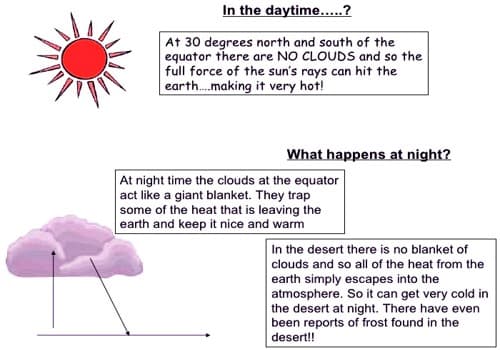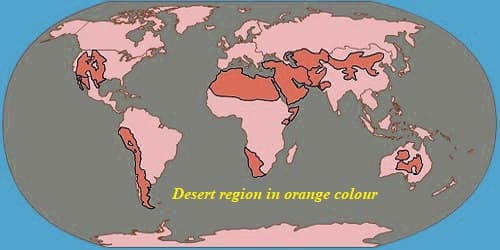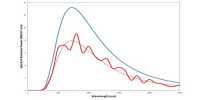Sands are very good absorbers of radiation and at the same time sands are very good radiators. At day time sands absorb heat from the sun and become very heated. Since they are very hot, so they radiate a large amount of heat.
At night, sands radiating heat cool quickly. As a result, at night, people feel extremely cold.
Desert is hot throughout the day because of lack of water and desert are cold throughout the night because sand cannot hold heat, so for the period of night when the sun is not shining the sand loses all its heat and compose desert cold. So during the night when the sun is not unblemished, the sand loses all its heat, making the desert night cold. Sand is the main cause why deserts are hot during the day and cold throughout the night.
Explanation:
Deserts are hot during the daytime because of the sand –
Because sand cannot hold heat, it needs a stable source of energy to stay warm (The Sun). In the deserts, the sun rays reach the surface of the earth at almost right angles during summertime. The heat that radiates from the sun and heats up the land begins to heat up the air and then escapes into the environment due to the lack of clouds and moisture. The heat is consequently resolute over small areas of ground which gives immense heat. Daytime temperatures are high due to no cloud or humility to help block the sun rays. This is the major cause that deserts can be hot during the day but cold during the night. The deficiency of plants and water bodies allows sun rays to be engrossed into the desert surface. Then the surface returns this heat to the environment causing high atmospheric temperatures.
Deserts are hot for two reasons:
- Because of the deficient in of water, deserts cannot maintain many plants. This plant life in photosynthesis cools the earth around it.
- Sand cannot hold heat. The sun on a desert shines just as bright as it shines everyplace else, but sand just acts as a reflection of the sun.

Deserts are cold during the night because of the sand –
Deserts can get actually warm throughout the day, but cold downward quickly to be cold at night. Deserts are cold by night as the cloudless skies allow the daytime temperatures to escape quickly after nightfall. In other places where there might be plants or it’s more urban surroundings, it still stays humid at night if it’s temperate throughout the day. When the atmosphere is extremely cold it will not have much humidity. Hot and dry deserts have a mean yearly warmth of 20 to 25 degrees Celsius, and the tremendous temperatures can range from 43 to 49.5 degrees Celsius throughout the day and minus 18 degrees Celsius at night. Thus, areas in the polar region that have very cold air will not receive considerable rainfall.
Because of the heat and the deficient in of precipitation, there are no huge shade trees to shade animals or plants. Most plants are stubby in height, such as ground-hugging shrubs, and there are very few large mammals because they are often not competent in storing enough water.
This is the major cause that deserts can be hot during the day but cold during the night.













